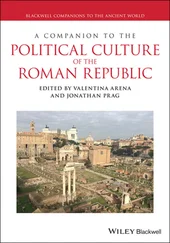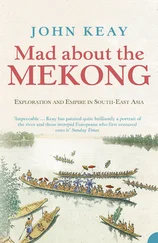Figure 15.3 Google Earth imagery allowing a comparison of part of Hellenistic-Roman Apamea in Syria before and after recent massive looting.
Figure 15.4 Successive street grid extensions at Antioch based on interpretation of vertical aerial photographs (after Leblanc and Poccardi 1999: Figure 5).
Figure 15.5 The Roman town at Umm el-Jimal, Jordan. (A) The unplanned character is typical of such towns and contrasts with most cities (Courtesy: Bert de Vries). (B) The scale and character of this large Roman-Umayyad town is readily apparent. Also visible is the earlier Nabataean town – the gray area at top center (APAAME_20020929_DLK-0155).
Figure 15.6 Yajuz seen in 1998 (above) when it lay in relatively open countryside and with just one intrusive building. By 2014 (below) several large houses had been constructed, including this one cutting through structures visible in the section.
Figure 15.7 Umm er-Rasas, Jordan. The village of about 3 ha grew up organically and without plan around an earlier fort of c. 2.2 ha. In time the abandoned fort, too, was settled, including no less than four churches.
Figure 15.8 A Roman farm south of Madaba in Jordan. The panorama shows the relatively arid marginal landscape though the structure itself is well-built.
Figure 15.9 The late Roman legionary fortress at Lejjun, Jordan. The location at a major spring (A) on the fringe of the cultivable area was attractive. The dark structures (B) above the fortress are a late nineteenth-century Ottoman barracks, the plateau in the center (C) has a Bronze Age fortress and an Iron Age fort can be seen right of center (D).
Figure 15.10 Roads and tracks in Arabia. (A) The Via Nova Traiana on the plateau south of the Wadi el-Hasa including standing milestones in situ (APAAME_20141019_DLK-0203C). (B) Recently discovered stretch of road southwest of Amman (APAAME_20111010_MND-0021). (C) Vicinal roads east of Jarash (APAAME_19990614_DLK-0056).
Figure 15.11 Fossilized field boundaries. Although dating is always problematic, these examples are closely associated with Roman period settlement. (A) German aerial photograph of 1918 showing strip fields. (B) Location of similar field boundaries identified on aerial photographs of 1953 in the area of Masuh southwest of Amman.
Figure 15.12 Qanats. (A) An example southeast of the Roman and early Umayyad town of Udruh in southern Jordan (APAAME_20090930_RHB-0368). (B) Qanats mapped from aerial or satellite imagery in Syria, especially around the Roman town of Androna.
Figure 16.1 Mosaic from Antioch (House of the Drinking Contest) of drinking contest of Dionysus and Heracles. Princeton University neg. 5273.
Figure 16.2 Mosaic from Zeugma (Gaziantep Museum) of Pasiphae, Daedalus, and Icarus. Courtesy J.-P. Darmon.
Figure 16.3 Mosaic from Emesa (Maarret en-Noman Museum) of Heracles as a child strangling the serpents. Photo J.Ch. Balty.
Figure 16.4 Mosaic from Palmyra (in situ) of Odaenathus and his son victorious against the Persians. Courtesy of M. Gawlikowski.
Figure 16.5 Mosaic from Shahba-Philippopolis (Shahba Museum) of Sea Goddess Tethys. Photo J.Ch. Balty.
Figure 17.1 Map of northern Syria. Courtesy of A. Bousdroukis. >
Figure 17.2 The colonnade at Apamea. © T. Kaizer.
Figure 18.1 Plan of Gerasa, after A. Lichtenberger, R. Raja and D. Stott 2019. “Mapping Gerasa: A new and open data map of the site,” Antiquity 93, issue 367: E7. doi:10.15184/aqy.2019.9.
Figure 18.2 The nymphaeum of Pella on the reverse of a Pella bronze coin from the time of Elagabalus, after Triton XVI, 8 January 2013, lot 738.
Figure 19.1 Relief of Jupiter Dolichenus from Dülük Baba Tepesi (Doliche). © Forschungsstelle Asia Minor, Westfälische Wilhelms-Universität Münster.
Figure 19.2 Statues on top of Nemrud Dağı. © T. Kaizer.
Figure 20.1 Hippodrome at Tyre. © T. Kaizer.
Figure 20.2 Temple of Zeus at Baetocaece in the Jebel Ansariyeh. © T. Kaizer.
Figure 21.1 The courtyard of the great Roman sanctuary at Heliopolis-Baalbek. © J. Aliquot 2009.
Figure 22.1 Qumran – caves where the Dead Sea Scrolls were found. © T. Kaizer.
Figure 22.2 Herod’s harbor at Caesarea Maritima. © D.A. MacLennan.
Figure 22.3 View over Roman siege works surrounding the rock of Masada on the eastern edge of the Judaean Desert, the last stronghold of the Jewish rebels in ad 73/4. © T. Kaizer.
Figure 23.1 The so-called Khazneh (“Treasury”) tomb at Petra. © T. Kaizer.
Figure 23.2 The Monumental Gate and the so-called Great Temple in the civic center of Petra. © D.F. Graf.
Figure 24.1 The central colonnade and the arch at Palmyra, viewed from the temple of Nebu. © T. Kaizer.
Figure 24.2 The temple of Bel at Palmyra. © T. Kaizer.
Figure 25.1 Plan of Dura-Europos, drawn by A.H. Detweiler, with labels added by J.A. Baird. Courtesy of the Yale University Art Gallery, New Haven.
Figure 25.2 View from the citadel of Dura-Europos over the Euphrates. © T. Kaizer.
Figure 25.3 Head of Zeus Megistos from Dura-Europos. Courtesy of the Yale University Art Gallery, New Haven.
Figure 27.1 The great iwans in the central temple complex at Hatra. © T. Kaizer.
Figure 28.1 Rock drawing with Safaitic inscription, “By ʾghsm son of Shmt is [the drawing of] the oxen pulling the plough.” Photograph courtesy of the Badia Epigraphic Survey in 2017, see APSI 1 in OCIANA.
Figure 30.1 Roman roads in Syria and Mesopotamia. © B. Isaac.
Figure 30.2 Roman roads in Judaea and Arabia. © B. Isaac.
Figure 31.1 Political map of the Roman Near East, 30 bc. © A.J.M. Kropp.
Figure 31.2 Petra, Qaṣr al-Bint and its temenos, view to the east from el-Ḥabīs. © A.J.M. Kropp.
Figure 31.3 Arsameia, hierothesion, relief slab at “Sockel III,” depicting dexiosis between Antiochos I (69–36 bc) and Artagnes Herakles Ares. H 270 cm. © M. Blömer.
Figure 31.4 Herod Agrippa I (ad 37–44). Bronze coin (24 mm, twice enlarged) minted in Caesarea Maritima in ad 42/3. Agrippa and his brother Herod of Chalcis cuirassed standing either side of togate central figure (Claudius) and crowning him/Two hands clasping each other, inscription in two concentric circles “Covenant between king Agrippa and Caesar Augustus and the Senate and the people of Rome, friendship and alliance.” The drawing is a reconstruction based on what can be gleaned from the seven known specimens. Drawing: © A.J.M. Kropp. Photo: Hendin 2010: no.1248, courtesy of D. Hendin.
Figure 32.1 Palmyrene relief of camels used by armed escorts, Palmyra Museum. © T. Kaizer.
Figure 36.1 Tower-tombs at Palmyra. Two of the earliest tower-tombs on hilltops are visible in the back (center and right side). © T. Kaizer.
Figure 36.2 Necropolis at Tyre. The backsides of the tombs with raised sarcophagi are visible in the front of this photo. They flanked the road that ran to the centrally placed arch. © T. Kaizer.
Figure 37.1 Eye-stele from Petra. Now in the National Museum of Amman. © D.F. Graf.
Figure 37.2 Madbah High Place, Petra. © E.B. Williams Reed.
I The Hellenistic and Roman Near East
II The Decapolis
III Commagene and Osrhoene
IV The Phoenician coast and its hinterland
V Judaea, the Palestinian coast, the Galilee, Idumaea, and Samaria
VI The Nabataean kingdom
Julien Aliquotis researcher at the French National Center for Scientific Research, in Lyon. In the Maison de l’Orient et de la Méditerranée (HiSoMA unit), he has led the project of the “Inscriptions grecques et latines de la Syrie” since 2017. He is the author of Inscriptions grecques et latines de la Syrie 11: Mont Hermon (2008), La vie religieuse au Liban sous l’Empire romain (2009), and Inscriptions grecques et latines du Musée national de Beyrouth (2016, with Jean-Baptiste Yon). He also has co-edited La Phénicie hellénistique (2015) and Sources de l’histoire de Tyr (two volumes, 2011 and 2017). His current focus is on the epigraphic corpora of Beirut (Lebanon) and Northeast Jordan.
Читать дальше












